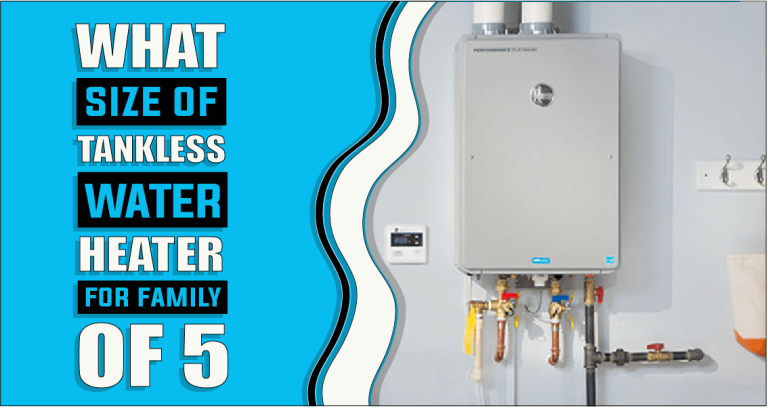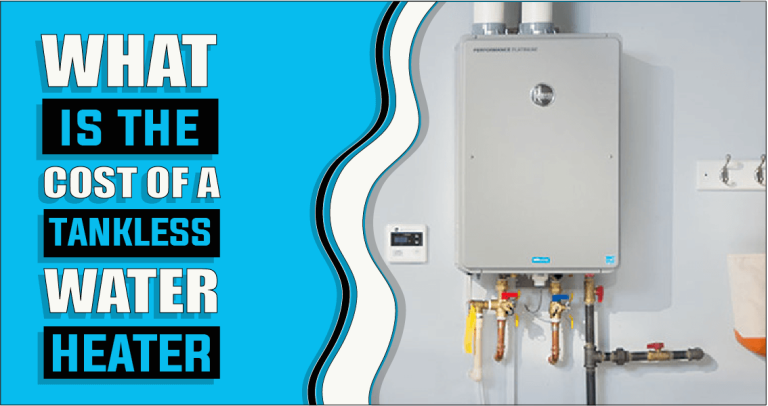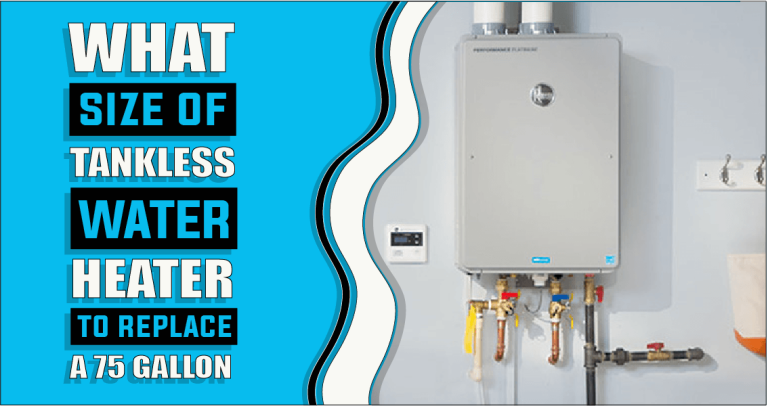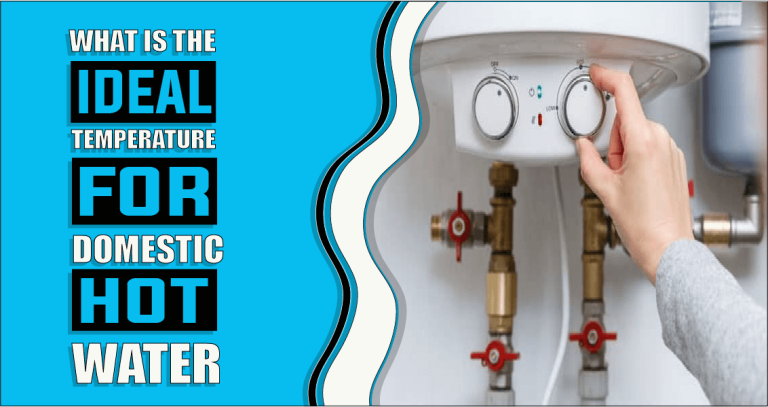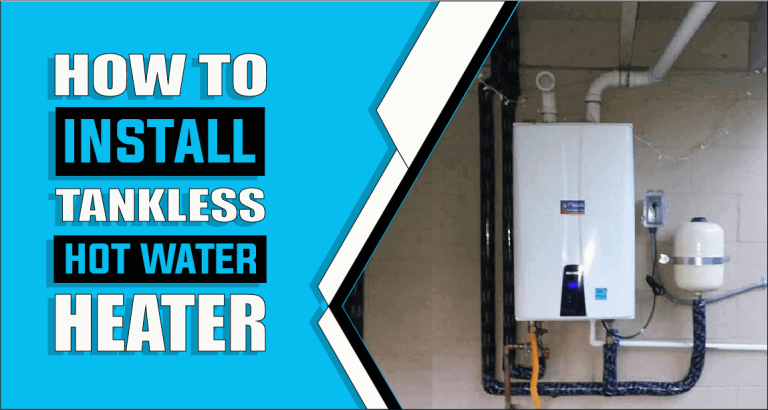How To Wire A Tankless Water Heater – The Truth Reveals
Tankless water heaters are an ideal way to maintain a consistent supply of hot water in your home. Whether it’s for taking showers, washing dishes, or doing laundry, the ability to enjoy a never-ending supply of heated water is just one benefit that tankless systems offer over traditional storage tanks. But before you can begin enjoying the convenience and comfort offered by your new tankless heater, there is one important step – wiring it properly. So are you ready to take on the challenge of wiring a tankless water heater? It can seem intimidating at first, but if you have the right tools and follow our step-by-step instructions, you’ll soon be enjoying hot water on demand!
With enough patience, this project is doable for the average do-it-yourselfer. Plus, think about how good it will feel to accomplish such an ambitious task! Keep reading for our helpful guide on how to wire a tankless water heater so that you can enjoy all the benefits of this time-saving piece of equipment.
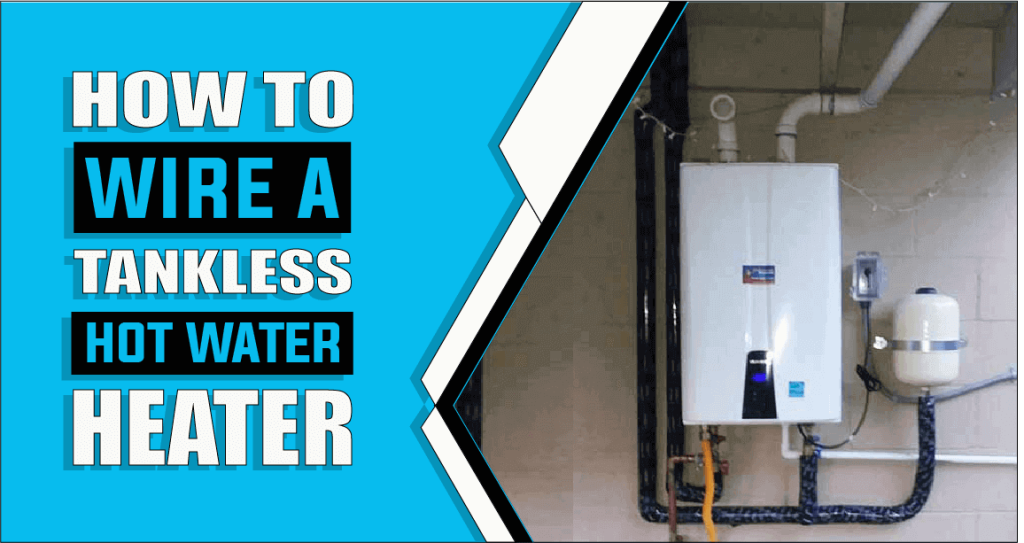
Let’s Investigate how to wire a tankless water heater
A tankless water heater is an energy-efficient way to heat water without the need for a storage tank. It works by heating the water on demand, which means it only heats up when you turn on the tap, saving energy and money in the long run. The tankless water heaters offer many benefits including unlimited hot water, significantly lower monthly utility bills, smaller space requirements compared to traditional tank-style systems, and longer product life spans due to reduced wear and tear.
Furthermore, the installation process sometimes requires a qualified plumber or HVAC technician. They will evaluate your home’s plumbing layout and gas line size as part of the assessment process before selecting a unit that fits your needs. Generally speaking, installation time takes around 4-6 hours depending on the complexity of the job and usually involves running additional gas lines and venting before the unit can be properly installed.
Once installed, your system may require some minor adjustments to ensure it’s working correctly such as setting temperature settings or making sure all connections are secure before being activated. Overall, the wiring process of a tankless water heater is easy to do and you can also perform it by yourself. This article will provide step-by-step instructions on how to properly wire a tankless water heater.
Electrical Requirements for Wiring a Tankless Water Heater
Wiring a tankless water heater requires certain electrical requirements to ensure it runs safely and efficiently. When selecting the right voltage, ampere requirement, and other components for your tankless water heater setup, it is important to understand the details of what you need. Following the correct electrical requirements when installing a tankless water heater is essential in avoiding costly repairs down the road due to faulty wiring or inadequate power outlets needed by the unit itself.
1: Right Voltage Requirement
A standard electrical outlet provides 240 volts, while a tankless water heater requires only 120 volts. The voltage must be sufficient to power the water heater. To determine which voltage is best suited for your setup, consult a licensed electrician or an experienced HVAC technician.
2: Amperage Requirement
To ensure the safety of your system, it is important to have the correct amperage rating when wiring a tankless water heater. The amperage requirement needed to power the unit depends on the size of your setup and how many appliances you need to power. Generally speaking, most tankless water heaters require a minimum of 30 amps of the circuit breaker. This means the wiring must be rated at least 10 gauge and capable of handling up to 40-amps.
As an additional safety measure, you may also want to install a dedicated circuit breaker for the new installation. This will help prevent overloads on your existing electrical systems and ensure proper power delivery to your tankless device.
If you are replacing an older tank-style water heater with a newer model, you may need to upgrade or replace existing wiring or circuits as well. Replacing any old wire is essential as using worn or outdated wiring can cause potential safety risks such as arc faults or shorts that could potentially lead to fire or injury hazards. It is always best practice to check with local codes before beginning any projects like this one to stay compliant with all regulatory standards and ensure peace of mind while using your new water heater installation.
Summarily, when shopping for a new tankless water heater, make sure that its wattage requirements match those of your power panel as some larger models may require more than just a single 240V line with appropriate amperage levels. Additionally, look for units that are designed for use with GFCI outlets or double pole breakers as these extra measures provide yet another layer of protection from dangerous shocks or current surges in your system. And always consults with a professional electrician before installing any new heating device to go over all necessary preparations required for safe operation.
How To Wire A Tankless Water Heater
Setting up your tankless water heater doesn’t have to be hard. With just a few simple steps, you can provide yourself with endless hot water that will last for years of luxurious showers and steamy sinks!
1: Find An Appropriate Place and Understand Local Codes and Regulations
Finding an appropriate place to mount the unit to maximize efficiency is an important first step in wiring a tankless water heater. Not only should installers take into account the size of the unit and its voltage requirements, but they must also keep in mind local codes and regulations. Depending on the installation, some local governments may require permits or inspections before completing the work.
2: Gather Supplies and Tools Needed for Wiring
Gathering Supplies and Tools is also essential before beginning any electrical work on a tankless water heater. Here is the list of supplies and tools that most installers will need:
- A screwdriver set
- Adjustable wrenches
- Wire strippers
- Electrical tape
- Pipe cutters
- Heat shrink tubing and connectors
- Needle nose pliers
- Measuring tape
- A voltage tester or multimeter
- 10-gauge wire for both hot and cold connections
Some specialized tools may be required as well based on the specific model of the tankless water heater being installed.
3: Putt on Safety Gear Before Beginning Work
Before starting any electrical work, installers need to Put On Safety Gear such as safety glasses or goggles, gloves, and long-sleeved shirts to protect against potential shocks or burns from coming into contact with exposed wires or components. Additionally, it’s important to ensure that there is little to no risk of flooding by finding an appropriate spot for installing the unit such as an area where moisture won’t reach any outlets or wiring.
4: Identify the Power Source
It’s important to Identify the power source that will provide power to the tankless water heater. This can usually be done through careful inspection of existing wiring around the house or building which helps determine where electricity is already connected so that new wires can be attached directly to them without needing additional outlets or circuit breakers.
5: Shutt off the Power to the Area Where the Unit will be Installed
After identifying the power source, installers must shut off the power so that no accidents occur during installation. This includes flipping off any circuit breakers in fuse boxes associated with the area where the tankless water heater will be installed as well as unplugging any appliances from nearby outlets if applicable before beginning work.
6: Connect the Thermostat Wires to their Outlets
Connecting the thermostat wires to their outlets in the control box of the tankless water heater is an important step in wiring it up. To begin, you’ll need to strip the insulation off of each wire set and then connect them through a terminal block inside the control box. It’s important to make sure that all the connections are tight and secure, as any loose connections could result in electrical hazards.
7: Run Electrical Conduit By Using Drill Machine
Once you’ve connected all of the thermostat wires, you’ll need to run an electrical conduit from the power source to where it will be mounted. This is typically done by drilling holes through walls or floors and running flexible conduits through them.
8: Mount an Electrical Junction Box
Next, you’ll need to mount an electrical junction box close to where you plan on mounting your tankless water heater so that you can run a wire from it directly into the control box. Make sure that this junction box is securely fastened and waterproofed if needed.
9: Secure all Electrical Components with Wire Nuts and Securing Screws
Once everything is wired up properly, it’s time to secure all electrical components with wire nuts and securing screws, as well as install a fuse or circuit breaker near or at your power source depending on local regulations.
10: Test Wiring by Plugging in your Tankless Water Heater and Turning on its Power Switch
After ensuring that all of these safety measures are taken care of, then finally you can test your wiring job by plugging in your tankless water heater and turning on its power switch. This final step is necessary for completing your installation as it ensures that your tankless water heater has been wired correctly and safely before use.
Lastly, take extra precautionary steps such as using waterproof tape around outdoor wiring, and using stainless steel screws when mounting outdoors, wherever applicable for added safety.
Now that you know how to wire a tankless water heater, you can finally enjoy the convenience of hot water on demand with peace of mind!
Conditions Must be Met Before Wiring a Tankless Water Heater
Preparing to wire up a tankless water heater? Don’t forget that satisfying the right conditions is essential for a successful installation. Make sure your checklist includes all of these prerequisites before you get started!
1: Checking Warranty:
Before wiring a tankless water heater, it is important to check the warranty conditions. This will help to ensure that any repairs or replacements needed in the future can be done quickly and easily, as well as minimize any potential costs.
2: Permit or License:
Depending on where you are located, you may need a permit or license from local authorities before beginning the wiring process for your tankless water heater. If this is the case, make sure to obtain the necessary paperwork ahead of time to avoid any complications down the line.
3: GFCI Protection:
To keep everyone safe, it’s important to install ground fault circuit interrupter protection near the new tankless water heater. This helps protect against electric shock and fires by automatically shutting off power if a ground fault is detected.
4: Grounded Circuit:
For your new tankless water heater to work correctly and safely, it must be connected to a grounded electrical circuit with an appropriate size wire gauge. Without this connection, your unit could become damaged or malfunction due to improper voltage supply.
5: Over-Current Protection:
To prevent damage due to overcurrents or short circuits in your wiring system, be sure to install overcurrent protection devices between your power sources and any switches connected with them. This will help protect both people and property from harm should an unexpected surge occur during the operation of the system.
6: Proper Voltage Supply:
To ensure optimal performance of your tankless water heater, you must connect the appliance to a power source with the proper voltage rating. Not doing so could cause serious damage not only within the appliance itself but also throughout its electrical components.
As long as you have all the necessary conditions met and take the proper safety precautions, you can be sure that your tankless water heater wiring job will go off without a hitch! Good luck and enjoy the convenience of having hot water at your fingertips.
Frequently Asked Questions
Yes, specific wiring is required for tankless water heaters. Depending on the type of model you purchase, it may require 240-volt or 120-volt wiring. You must follow the manufacturer’s instructions carefully to ensure proper installation and functioning.
The power requirements for a tankless water heater depend on the model and size of the unit. Generally, electric tankless water heaters require 240-volt wiring while gas models require 120-volt wiring. It’s always important to check with your local utility company to ensure you have the right voltage needed for your specific model.
The number of wires you need for a tankless water heater varies depending on the model and size. Generally, electric models require four wires (black, white, red, and ground) while gas units require three (black, white, and ground). Again it’s best to check with the manufacturer’s instructions for specific wiring.
Yes, a tankless water heater should have a dedicated breaker to ensure optimal performance. Generally, electric models require a 20-amp circuit breaker while gas units require a 15-amp circuit breaker. You must follow local codes and regulations when installing any electrical equipment.
Yes, a 200 amp service should be sufficient for a tankless water heater. However, you may need more than one circuit depending on the size and type of tankless heater you have. It’s best to check with your local electrician or utility company if you are unsure about the power requirements for your specific model.
No, 100 amp service is not sufficient for a tankless water heater. Generally, electric models require at least a 240-volt circuit with a 20-amp breaker while gas models need 120-volt circuits with 15-amp breakers. It’s important to always consult the manufacturer’s instructions as well as any local codes
Your tankless water heater may be tripping the breaker if it is not properly installed or wired. Make sure that all wiring connections are in good condition and securely fastened before testing your unit. If you suspect a problem with your wiring, it’s best to contact a qualified electrician to inspect and repair it as necessary.
Conclusion
We hope you found this article helpful in determining how to wire a tankless water heater. Wiring a tankless water heater correctly is essential for optimal performance. Make sure you have the necessary conditions met and take all safety precautions before beginning the job. Also, be sure to double-check with your local utility company regarding any specific wiring requirements for your particular model. With a little bit of knowledge and preparation, you can be confident that your tankless water heater wiring job will be a success! Following these steps carefully can help you achieve success when it comes to wiring your tankless water heating system, so don’t forget these important tips before starting!
Ella John is passionate about helping her readers make the best choice when purchasing a heater. She understands that selecting a heater can be difficult and strives to provide information to help make the decision easier. Ella’s website, Heatersinfo.com, provides valuable insight into heating trends and types of heaters and tips on how to care for them. She also advises selecting the right heater based on individual needs and preferences. Her expertise in electronics makes her an excellent source of knowledge, and she is confident that anyone who visits her website will find the perfect heater information for their needs. Ella’s dedication to helping others make educated decisions about buying the right heater is unparalleled, and she hopes to continue offering her expertise for many years. With Ella’s help, finding the perfect heater can be a breeze!

